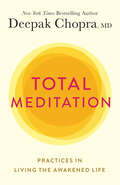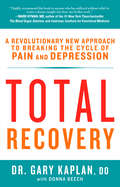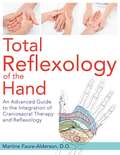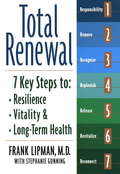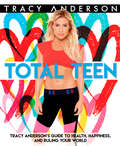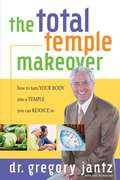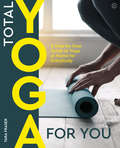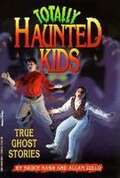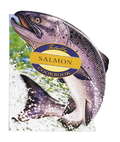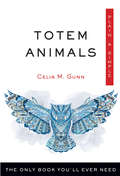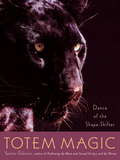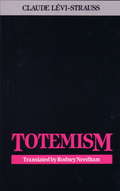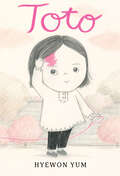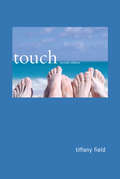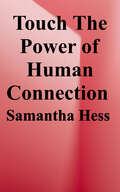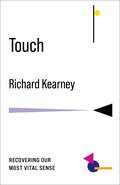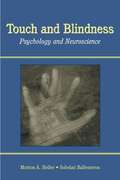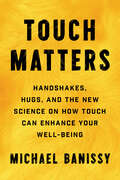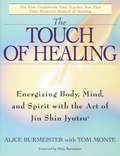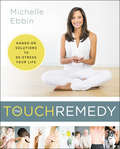- Table View
- List View
Total Meditation: Practices in Living the Awakened Life
by Deepak ChopraThe definitive book of meditation that will help you achieve new dimensions of stress-free livingFor the past thirty years, Deepak Chopra has been at the forefront of the meditation revolution in the West. Total Meditation offers a complete exploration and reinterpretation of the physical, mental, emotional, relational, and spiritual benefits that this practice can bring. Deepak guides readers on how to wake up to new levels of awareness that will ultimately cultivate a clear vision, heal suffering in your mind and body, and help recover who you really are. Readers will undergo a transformative process, which will result in an awakening of the body, mind, and spirit that will allow you to live in a state of open, free, creative, and blissful awareness twenty-four hours a day. With this book, Deepak elevates the practice of meditation to a life-changing quest for higher consciousness and a more fulfilling existence. He also incorporates new research on meditation and its benefits, provides practical awareness exercises, and concludes with a 52-week program of meditations to help revolutionize every aspect of your life.
Total Recovery: Breaking the Cycle of Chronic Pain and Depression
by Gary Kaplan Donna BeecherWhy can't I get better?Did my doctors miss something?How can I recover? According to Dr. Gary Kaplan, conventional thinking about the nature of chronic pain and depression is essentially flawed. Although physicians continue to diagnose conditions like migraines, fibromyalgia, chronic fatigue, chronic back pain, depression, anxiety, and PTSD, a growing body of research shows that these are in fact symptoms of something else—a deep-rooted inflammation in the brain. This inflammation can affect the nervous system for months-even years-to devastating effect.In Total Recovery, Dr. Kaplan demonstrates that it is possible to quiet the inflammatory state at the root of chronic pain and depression, and lays out a revolutionary new medical approach to ending your suffering and reclaiming your health.
Total Reflexology: The Reflex Points for Physical, Emotional, and Psychological Healing
by Martine Faure-AldersonThe first complete book of reflexology to incorporate acupuncture, naturopathy, homeopathy, and the chakra system• Remaps the entire foot to fine-tune the pressure points• Explains how to work with the emotional reactions that may be released when physical conditions are treated• Full-color detailed diagrams provide precise illustrations of pressure points In this groundbreaking work, Dr. Martine Faure-Alderson takes reflexology to a new level by integrating acupuncture, naturopathy, homeopathy, and other holistic healing modalities into the practice. From her background as a physician, she brings a scientific precision to using the foot as a map of the body and all of its systems. She then uses her training in alternative therapies to integrate the mental and psychological issues that may accompany physical conditions, providing the first complete holistic approach to using reflexology for physical, emotional, and mental health.Total Reflexology presents each of the major body systems in turn--from the digestive system to the human energetic system--using 25 full-color newly mapped foot diagrams that provide precise indications of pressure points and their correspondences to all areas of the body. The author also includes her latest work using craniosacral therapy and the role of the cerebrospinal fluid in reflexology as well as how to integrate use of the chakra system. She shows how finely tuned reflexology stimulates the body’s self-healing abilities, making this an indispensable resource for the layman and professional alike.
Total Reflexology of the Hand: An Advanced Guide to the Integration of Craniosacral Therapy and Reflexology
by Martine Faure-AldersonHow to apply the precise treatment techniques of Total Reflexology, which combines craniosacral therapy and foot reflexology, to the hands • Explains the special relationship between the hand and the brain, making hand reflexology ideal for treatment of neurological, mental, and emotional disorders • Details how to use the occipital zones of craniosacral therapy to pinpoint which zones and points on the hands to treat • Includes full-color detailed maps of the pressure points and zones of the hands One of the most defining physical characteristics of humanity, the hands contain reflex zones and pressure points related to the systems and organs of the body just like the feet. The reflex zones and points of the hands present the most effective means of treating psychological and neurological disorders due to their sophisticated relationship with the brain. Applying her ground-breaking combination of reflexology and craniosacral therapy to the hands, Dr. Martine Faure-Alderson explains how to use hand reflexology to treat the brain and each of the body’s systems, from the digestive system to the human energetic system. She provides precise full-color mapped hand diagrams illustrating the exact placement of the points according to the bones of the hands, the result of more than 40 years of research and clinical practice. She explains how to use the occipital zones of craniosacral therapy to pinpoint which zones and points on the hands to treat. Examining the psychological level of brain-hand interactions, the author reveals how neurological dysfunctions and mental disorders respond more readily to hand reflexology than to other forms of therapies. She explains how many physical ailments have a psychological component and how reflexology automatically triggers the release of endorphins by working directly on the autonomic nervous system. The author explores the role of nutritional supplements, including Omega 3s, as a support to reflexology therapy and shows how finely tuned reflexology stimulates the body’s self-healing abilities and cellular regeneration, making this an indispensable resource for holistic health practitioners and for home self-care.
Total Renewal
by Frank LipmanIn terms of health, most of us live at 50 percent of our capacity. Total Renewal takes us the rest of the way there. To varying degrees, we all suffer from digestive disorders, low-grade toxicity, or fluctuating blood sugar levels. While not ballooning into full-fledged diseases, these conditions limit our enjoyment of life and prefigure illnesses that loom in our future. Consisting of seven steps, Dr. Frank Lipman's Total Renewal Program is the key to reversing the unhealthy habits and poor functioning that we have slowly developed and accepted over the course of our lives. The program replaces them with new behaviors that leave us stronger, healthier, and more durable. Dr. Lipman's seven steps are: 1.
Total Teen: Tracy Anderson's Guide to Health, Happiness, and Ruling Your World
by Tracy AndersonIgnite your muscles. Clear your mind. Fuel your body. In a world where no selfie gets snapped without a flawless filter and your Instagram idols could teach classes on how to master angles, lighting, and retouching, it’s essential to create a rock-solid relationship with what’s real and what’s beautiful. Here’s the truth: you are real. You are beautiful. You are unique. Fitness pioneer Tracy Anderson is here to be your guide as you fully come to that realization, and fortify yourself with the tools to be your best—physically, mentally, and emotionally. Total Teen gives you a solid foundation to lead a balanced life—with absolutely no calorie counting, no fad diets, and no unrealistic workout routines. It’s a body-positive approach to taking care of and honoring your total self. Learning how to move, connect, and nourish yourself to let your light shine bright. Inside, you’ll find exercises, activities, and recipes as well as prompts and questions to spark new ways of thinking and new ways of being. You’ll be amazed at how good you can look and feel, and how powerfully you can show up for every aspect of your life. Begin now, and you’ll have a head start that will be with you forever.
Total Temple Makeover: How to Turn Your Body into a Temple You Can Rejoice In
by Gregg JantzWhile the world reels with an ever-growing array of lose-weight-quick schemes, Dr. Gregory Jantz applies common sense and spiritual encouragement to lead readers on a reasonable, realistic path to healthier living. Unlike the radical and even dangerous tactics that often captivate those who hunger for dramatic change, Jantz advocates a gentle twelve-week program, which considers the whole person, not just body weight. This comprehensive approach incorporates scripture study, prayer, and journaling, as well as nutrition, food-consumption plans, and body maintenance with the intention of reshaping a person's self-image in addition to dropping inches in the waistline.
Total Yoga For You: A Step-by-step Guide to Yoga at Home for Everybody
by Tara FraserThis is simply the perfect introduction to yoga!This complete illustrated practical guide reflects some of the most important developments in modern yoga teaching, including: the release of pent-up stress from busy lives, the emphasis on physical comfort and safety (working within your own abilities rather than forcing yourself into demanding postures), and a holistic approach, combining yoga with an appropriate lifestyle, especially with regard to diet and meditation. More than 200 step-by-step color photographs take you through the essential asanas (postures) and sequences, accompanied by clear and simple explanations. Special "boxes" suggest how beginners can adapt the classic postures to make them easier to perform - while more experienced students are shown how to progress to more challenging asanas as they build up their skills. Whatever your level of fitness and flexibility, Total Yoga is designed to meet your needs and lead you on the path to inner calm and a stronger, more flexible body.
Totally Awesome Health
by Linda Brower Meeks Philip Heit Julie Devillers Mary GeerGood health is being the best you. It is taking care of your body. It is taking care of your mind. It is getting along with others. It is showing feelings.
Totally Awesome Health
by Linda Meeks Philip HeitTextbook for teens on health, nutrition, relationships, pregnancy, old age, body image, physical activity, drugs, cancer, health care, pollution, first aid, and more.
Totally Haunted Kids: True Ghost Stories
by Bruce M. Nash Allan ZulloNine true ghost stories that have happened to real teens.
Totally Salmon Cookbook
by Helene SiegelSalmon is considered one of the healthiest foods available because it's an amazing source for high-quality protein, vitamins, and vital omega-3 fats. Now, with the Totally Salmon Cookbook, you can cast a line into salmon cooking with salmon steaks, filets, collars, smoked salmon, and more. This handy pocket-size cookbook is packed with delicious recipes, such as Grilled Salmon with Mustard Vinaigrette, Asian Barbecued Salmon Steaks, and Warm Salmon and Asparagus Salad.From the Trade Paperback edition.
Totally Toned Arms: Get Michelle Obama Arms in 21 Days
by Rylan DugganOnce Barack Obama joined the presidential race and attended events with wife at his side, the media, bloggers, and people everywhere started buzzing about Michelle's toned arms--and asking how on earth she does it. Even at the Presidential Inauguration, much of the talk was about Michelle's amazing arms. Media outlets from GMA to CNN to MSNBC have covered the story, inspiring women across the country to call their personal trainers and say, "I want Obama arms!" Certified personal trainer Rylan Duggan, creator of the successful (and pricey, at $70 each!) e-book series Go Sleeveless! , constantly gets calls from clients and reporters asking for the training secrets behind Michelle's arms. Duggan is the expert quoted in much of this coverage, and in TOTALLY TONED ARMS, he offers his 21-day program to get those sleek and sexy arms. In this low-priced paperback, Duggan reveals the program (combining strength training and cardio) including a 7-day jumpstart maintenance plan, and essential diet secrets designed to shed fat and reveal toned muscle, plus 50-60 black and white photos throughout to illustrate. This is a simple program that anyone can do, no matter what their fitness level, at home and with little equipment. With this series of 25 easy exercises, anyone can have Obama arms-- in a matter of weeks!
Totem Animals Plain & Simple: The Only Book You'll Ever Need (Plain & Simple Series)
by Celia M. Gunn“Animals are not only beholders of great beauty, but they are also beholders of ancient wisdom.” —Molly Friedenfeld <P><P>The idea of spirit guides speaking through animals and birds dates back to ancient times. Today, if we're open to watching and listening to our totem animals, we can develop beneficial relationships with them. We can also recognize that when a totem animal appears to us in a special way, it’s offering insight into what's happening in our lives. <P><P>This helpful book will give you a greater understanding of more than 60 totem animals and their unique meanings in an A to Z encyclopedic listing, lead you through the steps for accessing a chosen spirit, and help you explore the role of animal spirits in cultures around the world.
Totem Magic: Dance of the Shapeshifter
by Yasmine GalenornInside of each of us an animal lies in wait, ready to be revealed and explored. As humans we share the earth with many magnificent creatures, and through Pagan magic we can connect with the animal kingdom and with our individual animal spirits, or totems. In TOTEM MAGIC, author Yasmine Galenorn--whose soul is part panther, boa, and peacock--shows you how to uncover the animal spirits who guide and guard you in your life's journey. Drawing on Pagan shamanism, she offers guidelines, spellwork, and rituals for connecting with your totems for strength, protection, and empowerment. Through the ancient mystical practice of totem magic, you can discover your animal within while exploring new, exciting paths in your spiritual development.
Totemism
by Claude Levi-Strauss"Levi-Strauss continues his assault on the myth of the primitice as savage by turning to the phenomena of totemism an totoemix classification ... to show, contrary to this myth, that primitive thought rests upon a rich and complex conceptual structure." - Commentary
Toto
by Hyewon YumA little girl is self-conscious about the birthmark on her forehead— until a new friend helps her see it in a whole new light.This little girl doesn&’t mind her birthmark, most of the time. She calls it Toto, and her mom calls it a kiss from an angel. But sometimes, it feels like people look so hard at Toto they forget to see her. So when it&’s time to start school, her mom cuts her bangs to cover Toto up, at least for a little while.At school, she makes a new best friend right away! But then Toto accidentally comes out of hiding. Will her new friend see her differently with Toto in the picture? And does different have to be bad? Award-winning creator Hyewon Yum&’s knack for the adorable is at full power in Toto. This warm and vulnerable story grapples with the pressure we feel to blend in, and celebrates the moments—and the friends—that remind us how much better it is to be our full and singular selves.A Junior Library Guild Gold Standard Selection
Touch
by Tiffany FieldWhy we need a daily dose of touch: an investigation of the effects of touch on our physical and mental well-being. Although the therapeutic benefits of touch have become increasingly clear, American society, claims Tiffany Field, is dangerously touch-deprived. Many schools have “no touch” policies; the isolating effects of Internet-driven work and life can leave us hungry for tactile experience. In this book Field explains why we may need a daily dose of touch. The first sensory input in life comes from the sense of touch while a baby is still in the womb, and touch continues to be the primary means of learning about the world throughout infancy and well into childhood. Touch is critical, too, for adults' physical and mental health. Field describes studies showing that touch therapy can benefit everyone, from premature infants to children with asthma to patients with conditions that range from cancer to eating disorders. This second edition of Touch, revised and updated with the latest research, reports on new studies that show the role of touch in early development, in communication (including the reading of others' emotions), in personal relationships, and even in sports. It describes the physiological and biological effects of touch, including areas of the brain affected by touch, and the effects of massage therapy on prematurity, attentiveness, depression, pain, and immune functions. Touch has been shown to have positive effects on growth, brain waves, breathing, and heart rate, and to decrease stress and anxiety. As Field makes clear, we enforce our society's touch taboo at our peril.
Touch: The Power of Human Connection
by Samantha HessTechnology allows us to communicate across vast distances but something is lost in translation. Busy lives result in neglected relationships and patterns of behavior that discourage intimacy. <p><p>Touch: The Power of Human Connection illustrates 19 positions designed to bring you closer to the people you value and achieve true fulfillment. More importantly, Touch reveals the science behind cuddling and why it is such a fundamental need. <p><p>While no book guarantees happiness, Touch comes awfully close. This book shows you how to improve your health, boost your personal energy, strengthen your relationships, satisfy your partner and approach life with confidence. The author created a work of astonishing power and grace.
Touch: Recovering Our Most Vital Sense (No Limits)
by Richard KearneyOur existence is increasingly lived at a distance. As we move from flesh to image, we are in danger of losing touch with each other and ourselves. How can we combine the physical with the virtual, our embodied experience with our global connectivity? How can we come back to our senses?Richard Kearney offers a timely call for the cultivation of the basic human need to touch and be touched. He argues that touch is our most primordial sense, foundational to our individual and common selves. Kearney explores the role of touch, from ancient wisdom traditions to modern therapies. He demonstrates that a fundamental aspect of touch is interdependence, its inherently reciprocal nature, which offers a crucial corrective to our fixation with control. Making the case for the complementarity of touch and technology, this book is a passionate plea to recover a tangible sense of community and the joys of life with others.
Touch and Blindness: Psychology and Neuroscience
by Morton A. Heller Soledad BallesterosThis is a scholarly document concerning the neurological aspects of visual impairment.
Touch Matters: Handshakes, Hugs, and the New Science on How Touch Can Enhance Your Well-Being
by Michael BanissyAn exploration of the new science behind our most underappreciated sense and why we need to harness the power of touch for our health and well-being.Every day, we use our sense of touch to navigate the world. A handshake, a pat on the shoulder, a hug—all essential touches that make up our daily lives. In Touch Matters, Professor Michael Banissy brings together diverse scientific insights from the world's largest study on touch with takeaways on how to enhance your levels of touch for a happier, healthier life. The book explains why touch is essential to our well-being, the role it plays in our relationships, friendships, in the bedroom, workplace, in team activities such as sports, and much more. Banissy's latest research explores:Our "touch personalities"Touch starvationHow touch defines our relationships and self-esteemThe impact of touch on our physical and mental health This is a fascinating window into one of our most important and basic senses and how to harness its power.FEATURES ORIGINAL RESEARCH FROM "THE TOUCH TEST": Touch Matters is based on one of Banissy's most recent projects—the Touch Test—a science and broadcast collaboration with the BBC and Wellcome Collection. This project explored attitudes and experiences of touch via the world's largest contemporary survey on the topic, public exhibitions, and a series of broadcast programs focused on the topic of touch that received worldwide attention. The project had approximately 40,000 participants from 113 countries.OFFERS GUIDANCE ON COMMUNICATING AND CONNECTING IN OUR DAILY AND PROFESSIONAL LIVES: As we return to office work and live in a world where touch has become loaded with meaning, this book will help people understand how important touch is and the role it plays in every aspect of our lives, from relationships and friendships to the workplace and team activities and much more.Perfect for:Readers interested in science, psychology, and self-helpFans of James Nestor's Breath, Marc Brackett's Permission to Feel, Bill Bryson's The Body, Mark Miodownik's Stuff MattersAdults and parents of children resuming in-person activities including going back to the office, returning to school, traveling, and socializingThose interested in learning more about the science of touch, touch starvation, and how important touch is to child/human developmentPeople struggling with depression or anxiety around physical contact
The Touch of Healing
by Alice BurmeisterThe Touch of Healing offers readers the means to greater health, vitality, and self-understanding through the practice of an ancient oriental healing art and practical holistic philosophy called Jin Shin Jystsu. Gentle touching similar to acupressure is used to release tension that accumulates and is at the root of dysfunction, disease, and imbalance. The authors explain the natural life force that runs through the body and demonstrate with case studies, detailed analysis, and more than 30 illustrations, how to integrate this system into one's life. The key healing points and body flows, known as "Safety Energy Locks," are presented with step-by-step instructions on how to utilize them for healing and greater self-awareness. Many self-help practices are also offered that address a wide array of common ailments, including headaches, digestive disorders, fatigue, depression, and arthritis along with prescriptive exercises for relief of emotional ailments such as loss of confidence, anxiety, and depression.
The Touch Remedy: Hands-On Solutions to De-Stress Your Life
by Michelle EbbinAn empowering guide that unites the ancient healing power of touch therapy--from acupressure to reflexology--with modern science to help relieve the number one cause of disease today: stress--and to soothe anxiety, boost immunity, and alleviate pain.Human beings are wired for touch. Touch is critical to our physical and mental health. And for centuries, cultures around the globe have employed touch as a powerful force for healing. And yet America is an increasingly touch-deprived, high-stress culture, and we are paying for it with our wellbeing. Now, in The Touch Remedy, leading touch therapy expert Michelle Ebbin, who appears regularly on The Dr. Oz Show and has been featured on The Doctors, The View, and Live with Kelly & Michael, demonstrates how the ancient wisdom of touch can truly change your life.A fresh, contemporary approach to natural health, which draws on a unique combination of ancient wisdom and cutting edge research, The Touch Remedy is a collection of proven touch therapy solutions to calm and heal every member of the family, from babies to grandparents to pets. Demystifying time-tested touch therapy techniques such as Acupressure, Reflexology, Cranial Sacral Therapy, among others, Ebbin shares her invaluable insight and provides clear, step-by-step remedies, accompanied by beautiful full-color photos, to relieve a range of physical and emotional stressors, from back pain and headache to anxiety. Her solutions are quick, taking only two-to-three minutes each, and easy, requiring only three steps, and most of the remedies can be done anytime, anywhere, even on the go.In addition, Ebbin shows how touch therapy offers powerful strategies to improve intimacy in relationships, bond with your children, and improve communication through touch. With The Touch Remedy, we can quite literally take our health into our own hands--and nurture the bodies, minds, and spirit of our loved ones and ourselves.
